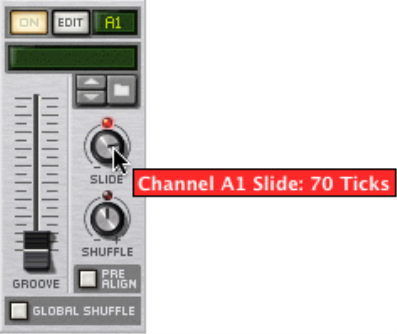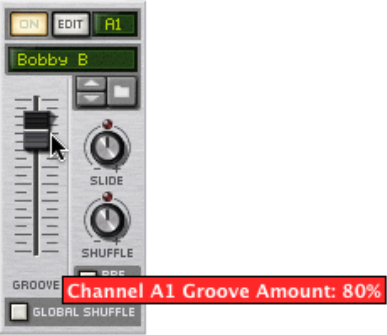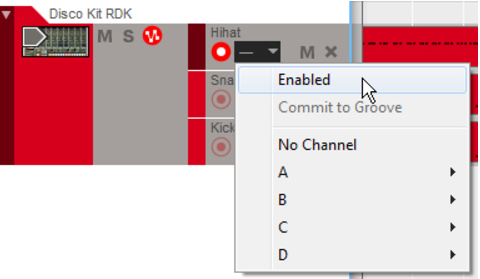This is useful for comparing with the original, ungrooved beat. If you want to do this for several note lanes set to a particular ReGroove channel, use the “On” button for the channel in the ReGroove mixer instead (see “On Button”).
|
|
There are all sorts of creative and useful ways to apply grooves to your music. See “Groovy tips & tricks”, later in this chapter, for some suggested techniques.
|
To learn some of the characteristics of a good groove-making clip, see “Tips for selecting the best Groove-Making Clips” below.
Your ReGroove patch is now ready to use. As discussed in “Applying grooves to your music”, simply route one or more note lanes to the ReGroove channel assigned to your new groove, and pull up the Groove Amount fader on that channel.






